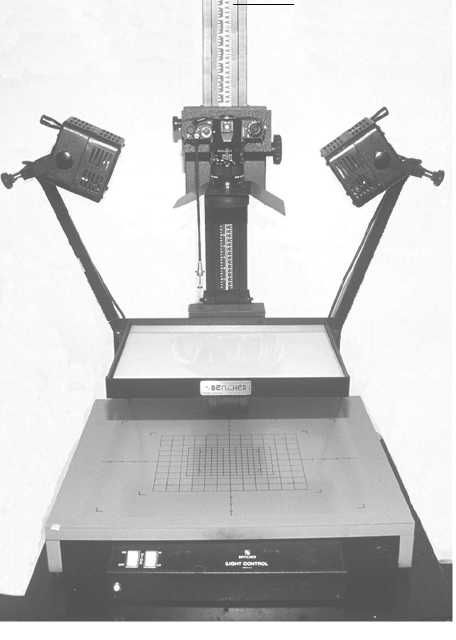302.180X
Figure 8-2.–Copy Stand.
are not provided with the copy stand, regular studio
lights can be used in their place.
When a copy stand is not available for use with a
35mm camera, the camera can be used on a tripod,
mounted for either horizontal or vertical copying. For
vertical copying, the tripod elevator post is removed and
inserted into the tripod upside down. The camera is then
mounted under the tripod, and the tripod is then centered
over the original to be copied.
Cameras for Copying Large Originals
When the copy work done in your lab is
considerable and includes many large originals, the type
of copy setup used by the graphic arts shops may be
needed.
The type of camera used in graphic arts photography
is called a process camera. Although larger than other
types of cameras, it is similar in principle. Since the
process camera is built for copying, it has a copyboard
and other features not associated with the average
camera. There are two types of process cameras:
horizontal and vertical.
Most horizontal process cameras are known as
darkroom cameras because the camera back is built into
the darkroom wall. Because the back of the camera
extends into the darkroom and the front is housed in a
separate room, you can load the film, focus the camera,
make the exposure, and develop the film without leaving
the darkroom. Of course, it is necessary for you or a
helper to go outside to place copy in the copyboard
before the exposure is made.
In recent years, vertical process cameras have
become more popular because they take up much less
floor space. This makes them especially useful aboard
ship.
8-7


